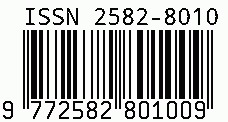
International Journal of Leading Research Publication
E-ISSN: 2582-8010
•
Impact Factor: 9.56
A Widely Indexed Open Access Peer Reviewed Multidisciplinary Bi-monthly Scholarly International Journal
Plagiarism is checked by the leading plagiarism checker
Call for Paper
Volume 6 Issue 4
April 2025
Indexing Partners



















ETL Strategies for Large-Scale Retail Data Warehouses
| Author(s) | Ravi Kiran Koppichetti |
|---|---|
| Country | United States |
| Abstract | Large-scale retail data warehouses are critical for storing and analyzing vast amounts of transactional, operational, and customer data. Effective ETL (Extract, Transform, Load) strategies are essential for ensuring that data is accurately extracted from diverse sources, transformed into a usable format, and loaded into the data warehouse for analysis. This paper explores the challenges of implementing ETL processes in large-scale retail data warehouses and provides strategies for optimizing ETL workflows. Key topics include data integration, scalability, performance optimization, and the use of modern ETL tools and technologies. The paper concludes with recommendations for designing robust ETL pipelines that meet the demands of the retail industry. |
| Keywords | ETL, Extract Transform Load, Data Warehouse Architectures, Data Warehouse Data Mining, Machine Learning, Artificial Intelligence, Data Science, Data Preprocessing, Data Pre-Processing, Data Preparation |
| Field | Engineering |
| Published In | Volume 3, Issue 8, August 2022 |
| Published On | 2022-08-02 |
| Cite This | ETL Strategies for Large-Scale Retail Data Warehouses - Ravi Kiran Koppichetti - IJLRP Volume 3, Issue 8, August 2022. DOI 10.5281/zenodo.15026506 |
| DOI | https://doi.org/10.5281/zenodo.15026506 |
| Short DOI | https://doi.org/g88f5n |
Share this


CrossRef DOI is assigned to each research paper published in our journal.
IJLRP DOI prefix is
10.70528/IJLRP
Downloads
All research papers published on this website are licensed under Creative Commons Attribution-ShareAlike 4.0 International License, and all rights belong to their respective authors/researchers.

